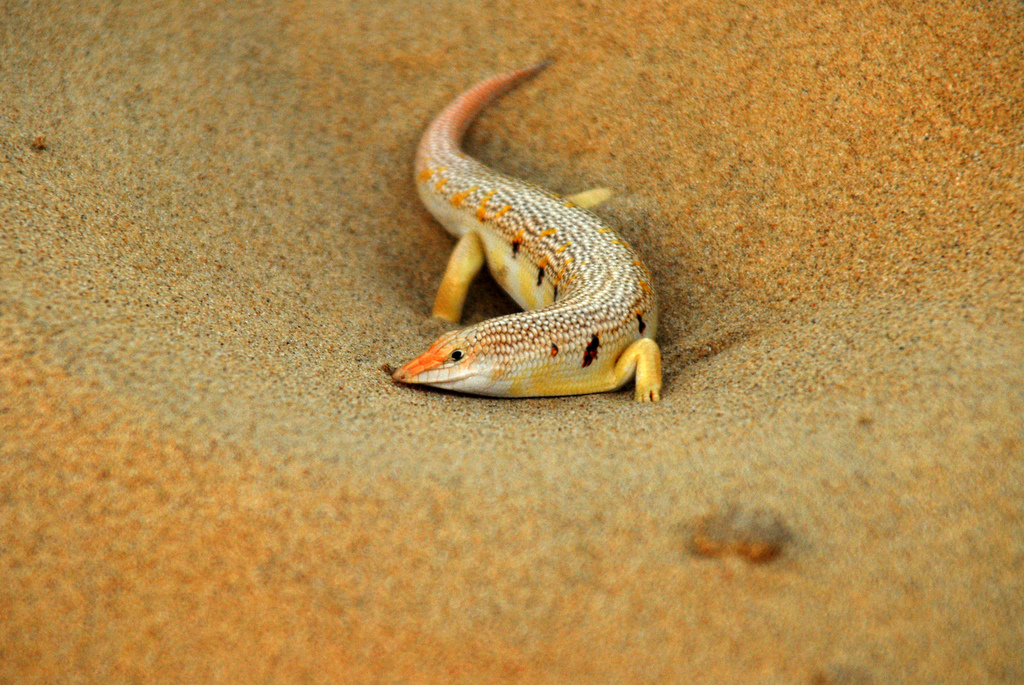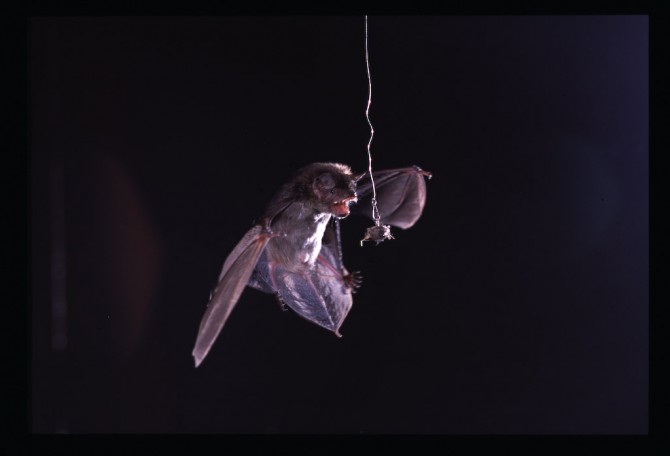Swimming lizards and jamming moths
Two interesting stories in Science this week, with some nice movies accompanying each.
Swimming lizards
The sandfish is a skink that lives in the Sahara desert. Aptly named, it dives into the sand like a fish. After that, it was anybody’s guess how it moves. Until now: researchers in Georgia Tech took high resolution X-ray movies of the sandfish underwater… uh, I mean sand. What they found was that it really does swim like a fish, or rather an eel. With adaptations to the different fluid property sand has over water. If sand is viewed as a highly viscous fluid, then the sandfish subsurface movements make perfect sense. There are certain differences between sandfish and eel movements: while both have a wave-like undulating motion, the sandfish’s undulation have a higher amplitude, to cope with the much stronger drag of sand as opposed to water.
The movies show surface movement, subsurface movement, and subsurface movement with x-ray opaque tags attached to the sandfish’s body and limbs. It is very clear that the sandfish holds its limbs close to the body to better perform its eel-like undulations.
Here is a surface movie of the sandfish diving into the sand:
X-ray movie of sandfish swimming under the sand:
Sandfish swimming under the sand,with X-ray opaque tags attached:
Jamming moths
Bats use echoes to locate their prey. They constantly click while they fly to avoid obstacles, and to find food, usually insects.As bats fly closer to their target, the clicking frequency increases, to facilitate a higher resolution of echoes and to better home in on the kill. Moths, a nocturnal, slow flying, yummy, high protein diet are particularly susceptible becoming bat food. Over time, the evolutionary arms race produced some defense mechanisms. One such device (or rather, organ) used by the Tiger Moth emits clicks that are similar to the bat clicks. Apparently, this sonar-jamming confuses the bats, causing them to miss their prey as shown in the first movie. The researchers silenced another moth, which promptly became bat-snack.
This one show the bat just missing a moth. You can hear the bat’s clicking and the moth’s counter-clicking.
This moth was silenced, and not so lucky — bat snack:
Maladen, R., Ding, Y., Li, C., & Goldman, D. (2009). Undulatory Swimming in Sand: Subsurface Locomotion of the Sandfish Lizard Science, 325 (5938), 314-318 DOI: 10.1126/science.1172490
Corcoran, A., Barber, J., & Conner, W. (2009). Tiger Moth Jams Bat Sonar Science, 325 (5938), 325-327 DOI: 10.1126/science.1174096





















Here is a video of a gecko swimming/flying in air: http://www.ted.com/talks/robert_full_learning_from_the_gecko_s_tail.html (about at 8:45)
It’s a different way of moving (flapping the tail) but nonetheless it’s another strange adaptation of a lizard to a fluid.
believe it or not saw a moth swimming on the surface and underneath water long antenae ,inch long mottled beige in colour .leeds liverpool canal in central leeds ….please help